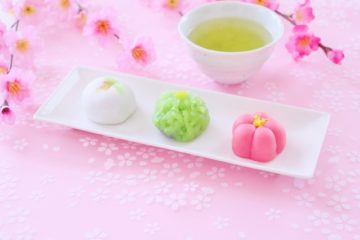Have you ever been to Japan in autumn, when Japan is full of colors and people feel the beauty of Japanese culture?
Leaves change into red, yellow, blown after summer.
it’s such a beautiful moment and at the same, the weather feels very comfortable.
Many people visit Japan to see autumn leaves, but most don’t know the connection between autumn leaves with Japanese culture.
Autumn leaves, called koyo(紅葉) or sometimes called momiji in Japanese, are symbols of Japanese autumn, and it is a part of Japanese culture.
Let’s explore the attraction of beautiful koyo in Japan.
“Koyo(紅葉)” and Japanese Culture
In November to December, people go to see koyo, and it is called momiji gari (紅葉狩り)”.
As mentioned before, momiji means autumn leaves, and gari(狩り) means hunting.
Why do people use a word hunting, not watching?
The difference between hunting and watching is if people catch and bring something as a souvenir or not.
That is because people admire the beautiful view and keep beautiful memories in their minds. So people started to use the word hunting.
As you can see from this expression, koyo has an important role as an autumn symbol.
In Japanese old poetry, koyo describes not only autumn beauty, but also life and love.
Moments, when colors are changing, are often compared to passing time or changing minds.
Let me introduce some of the old poems using koyo to describe beautiful scenery.
the fall season has a very special place in Japanese culture and is found in ancient poems
“小倉山 峰のもみじ葉 心あらば 今ひとたびの 御幸待たなむ”
-Autumn leaves on Ogura Mountain, could only have hearts, please not to fall until Emperor comes across here again-
Japan is the oldest continuous hereditary dynasty nation in the world. Especially in the Heian Era, which is the period this poem was written in, Emperor is deeply related to Japanese culture.
When the father of the Emperor looked at autumn leaves, he said to the writer of this poem that he wished to show this beautiful view to his son, and the writer represented his feeling in the poem.
People wanting to share their feelings when they see beautiful scenery is a feeling that hasn’t changed over time.
“奥山に もみじ踏み分け 鳴く鹿の 声聞くときぞ 秋はかなしき”
-In the deep mountain, deer walk in the street of autumn leaves and they make sounds. When I hear the sound, I feel the loneliness of autumn-
In autumn, male deer make a sound to look for female deer.
This expression is compared to the feeling of a lover or wife.
When it is getting cold, you may miss someone more like the writer did.
”ちはやぶる 神代も聞かず 竜田川 からくれないに 水くくるとは”
-Even when the gods held sway in the ancient days, I have never heard that Tatsuta River looks so beautiful when the leaves drop into the river and dyed into vivid red-

You would think this is just a poem describing the scenery of the river, but there is another story.
A man who writes this poem liked the wife of Emperor.
They could not share their feelings easily, so they used a poem to express their love.
The deep meaning of this poem is “my feeling for you is so strong that I can change the color of the water into the red.”
Famous Autumn Spots in Japan
One of the greatest things about colored leaves is people can enjoy it over 1 month.
Same as colored leaves, cherry blossoms are also famous for the seasonal symbol of Japan.
The tricky thing is, if you want to enjoy cherry blossoms in Japan, you have to plan precisely because cherry blossoms bloom only for 1 week. (But, it makes cherry blossom special, for sure)
Here are the famous koyo spots you can’t miss when you visit Japan.

Kiyomizu Temple / Kyoto
One of the most famous tourist spots, Kiyomizu Temple, has a different appearance in each season.
It is located on the hill, so you can see Kyoto city from there.
It is illuminated at night during spring and autumn, that’s also amazing.

Ruriko-in / Kyoto
This temple is famous for “Yukamomiji”, which is a reflection of leaves on the floor.
From the center of this room, you can see a variety of beautiful leaves and it is just magnificent.

Tofuku-ji / Kyoto
Tofuku-ji is located nearby Kyoto station, so it’s easy to access.
When I went there, I was surprised that colorful leaves were everywhere, as far as I could see.
From the top of the temple, all leaves look like a colorful carpet.

Nara Park / Nara
Nara Park is famous for deer, of course!
You can’t help taking pictures once you see the combination of cute deer and colorful leaves.
Nara is close to Kyoto, but there are fewer people and the streets are wider.
If you want to take your time, Nara is the perfect place.
Do You Want to Explore Japanese Culture More?
Did you decide on the next places to visit?
We are updating information about Japan and Japanese culture.
If you want to read more articles, Click here.



0 Comments